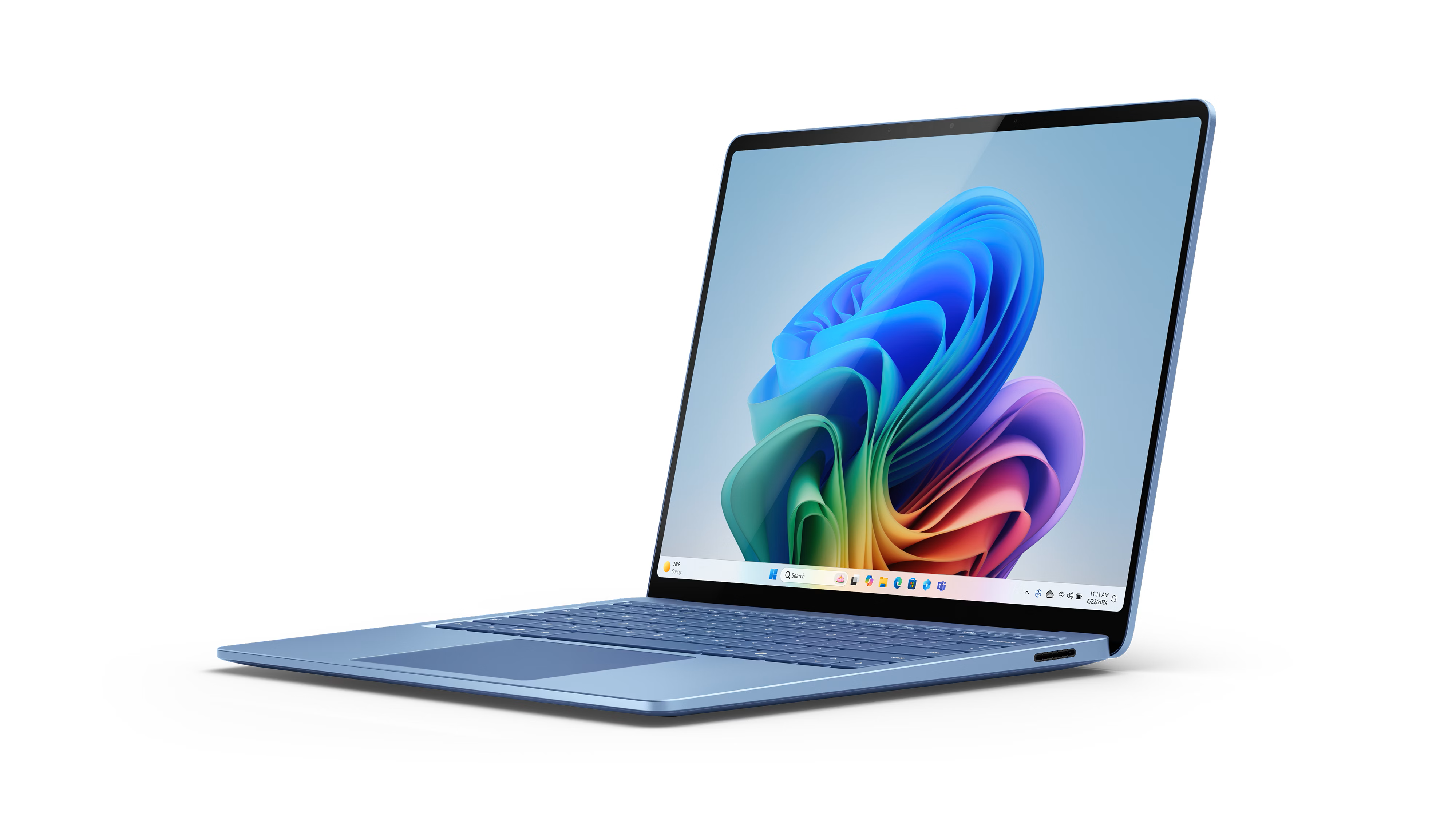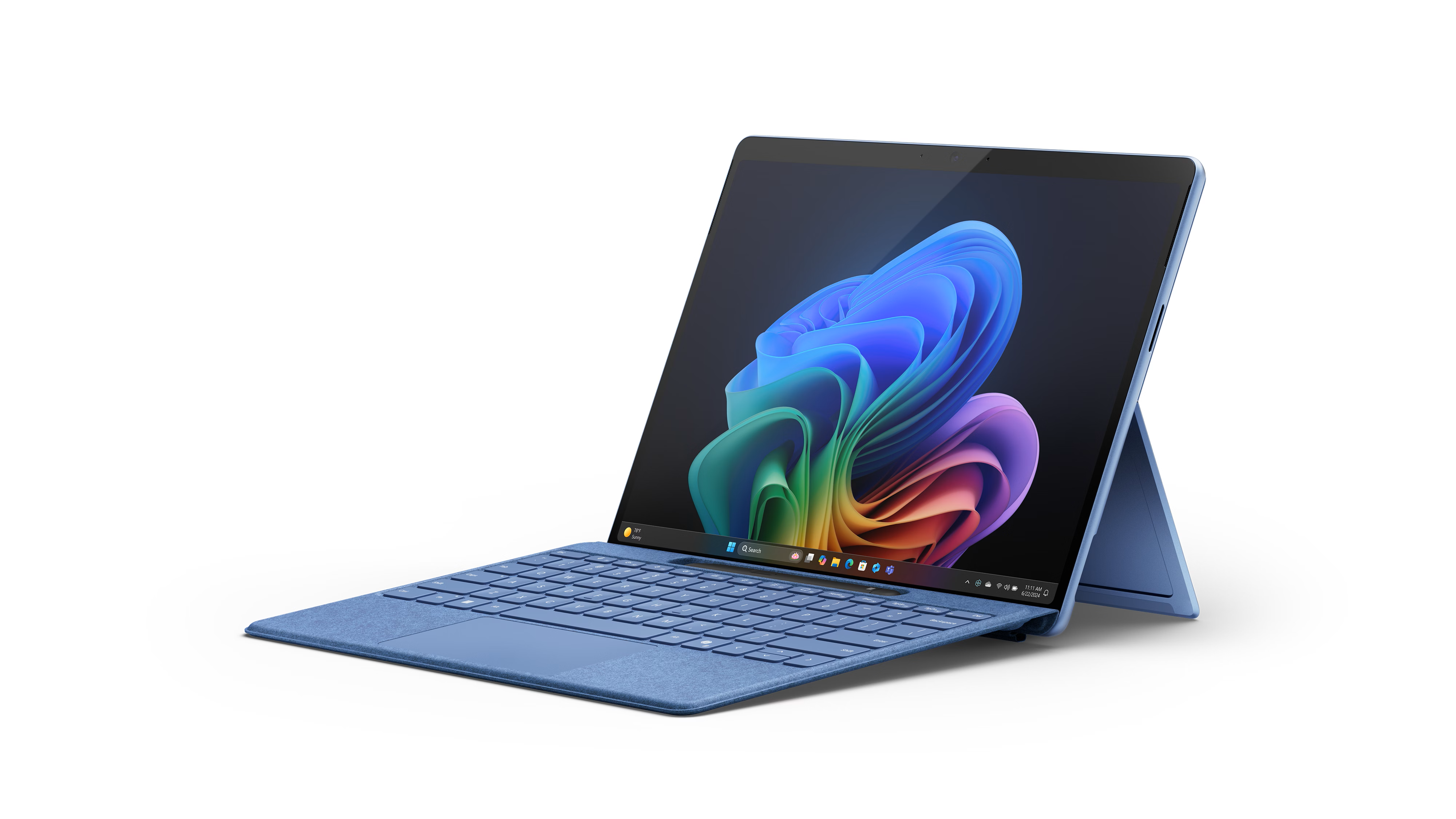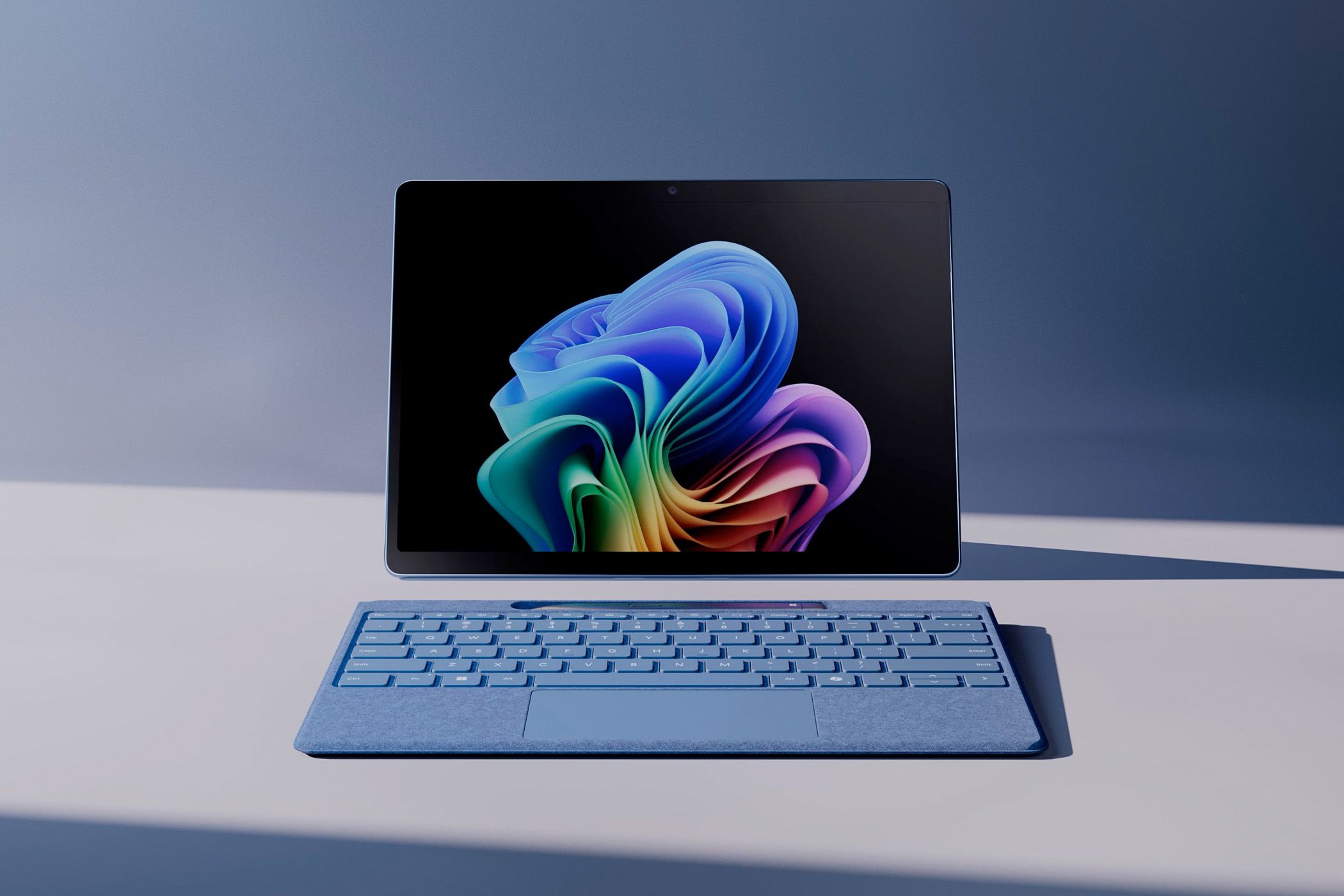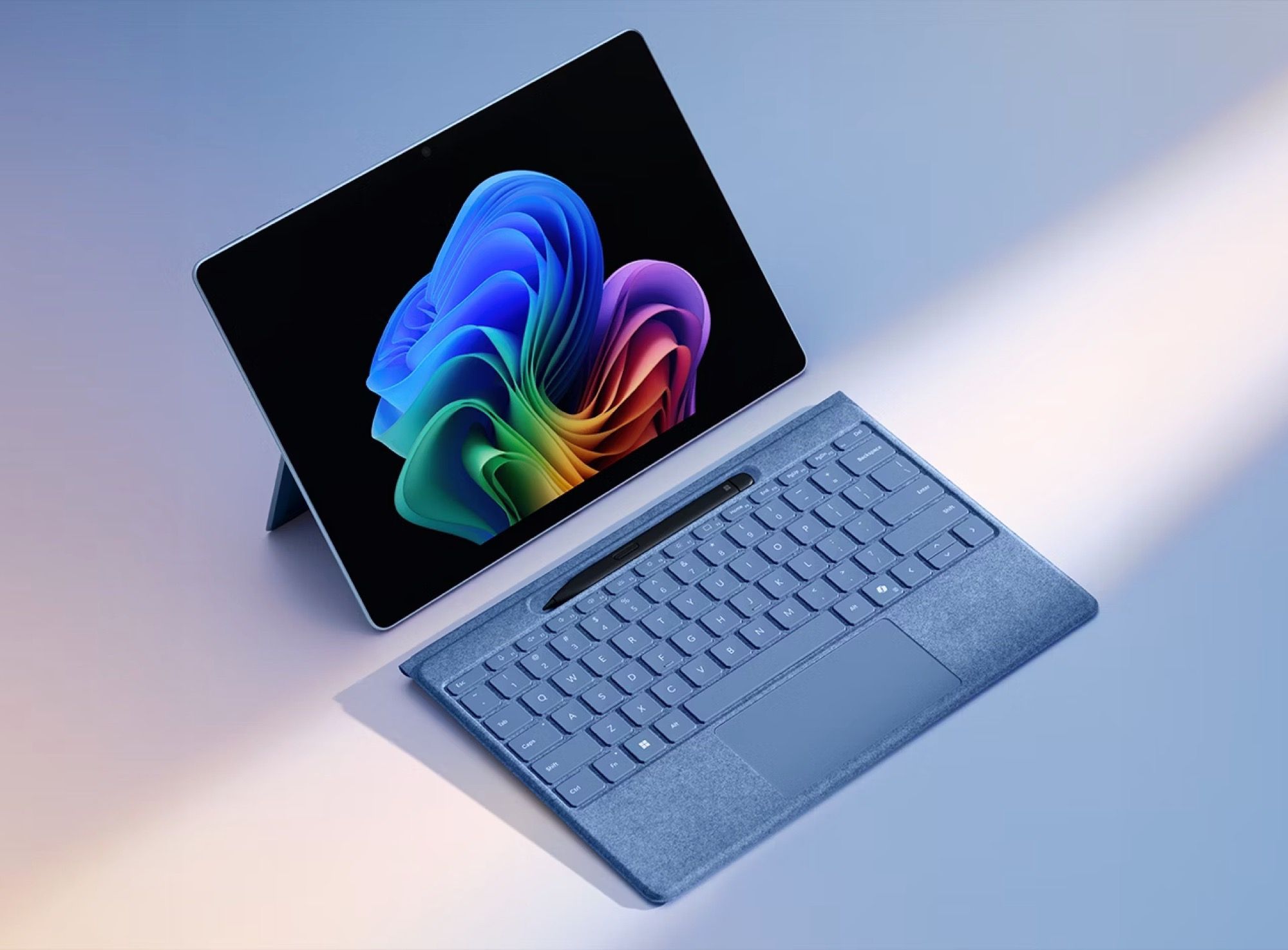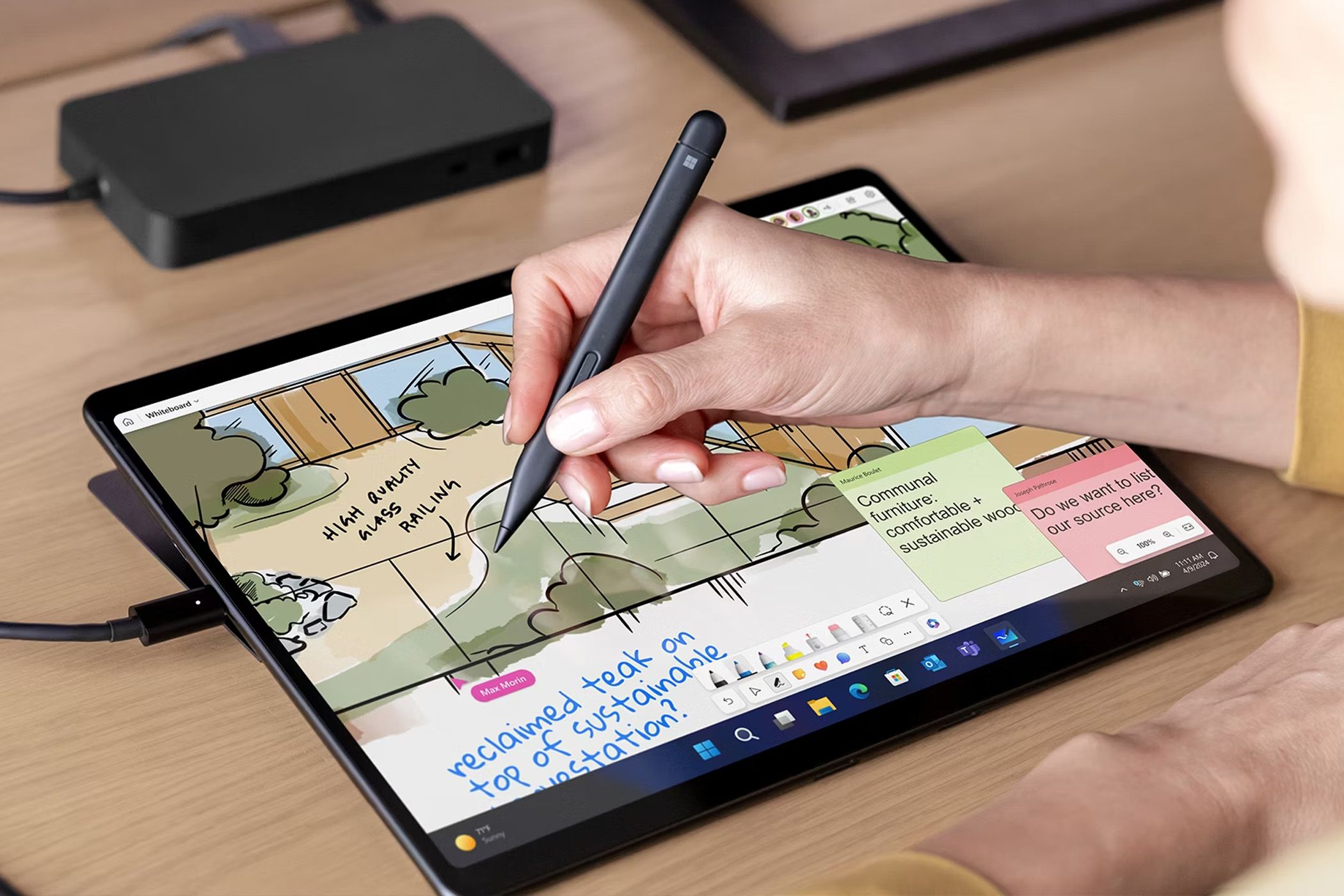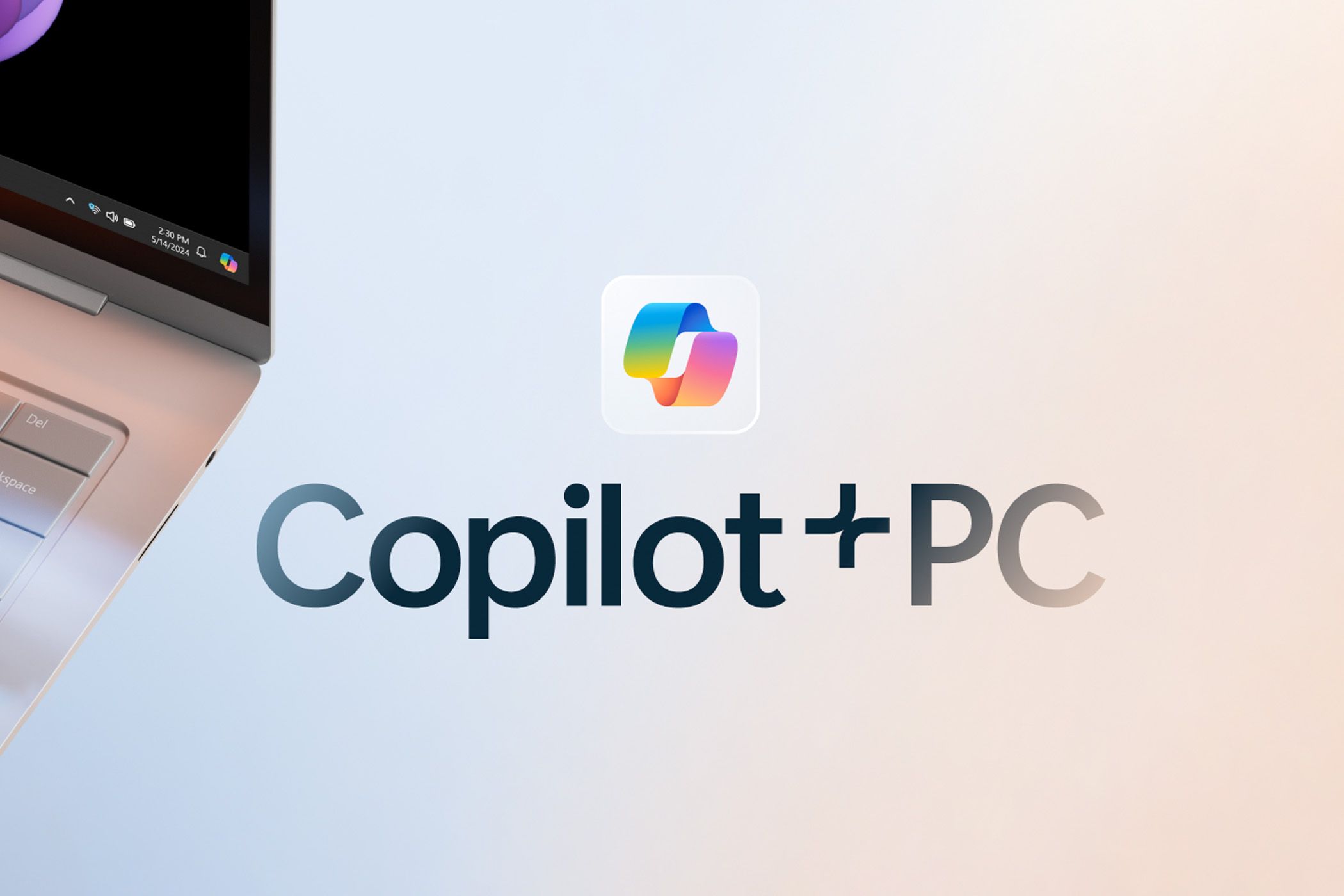Key Takeaways
-
The Surface Pro and the Surface Laptop differ in form factor. The former is a tablet you can turn into a 2-in-1 with an add-on keyboard accessory, while the latter is a traditional laptop.
- Get the Surface Pro if you need a powerful tablet for content consumption and productivity, and are ready to pay extra to transform it into a 2-in-1 laptop if needed.
- The Surface Laptop is made for people looking for a sleek yet beefy laptop they can use for office work, general productivity, and creative workloads that don’t require a potent GPU.
If you’re interested in getting a Surface device, the two main options to pick from are the Surface Laptop and the Surface Pro. Despite being similarly powerful, you should be aware of a slew of differences setting apart the two lines if you’re in the market for one or the other.
Surface Pro vs. Surface Laptop: Key Differences
The biggest difference between the two devices is the form factor. The Surface Pro family of devices includes high-end tablets made for touch interaction, which you can turn into 2-in-1 laptops with a detachable keyboard accessory. On the other hand, Surface Laptops are regular laptops that follow the thin and light design philosophy.
While you can transform a Surface Pro into a 2-in-1 laptop, the nature of the keyboard attachment means that it’s not lap-friendly like a regular laptop. Another thing to be aware of is that a keyboard will set you back at least $139 on top of what you paid for your Surface Pro, with the premium Surface Pro Flex Keyboard selling for a whopping $350.
While pricey, both the base Surface Pro keyboard and the premium Flex keyboard that offers Bluetooth connectivity offer a great typing experience and serviceable touchpads. Still, they aren’t made for using the device on your lap unless you like your lap experience to be extra wobbly. As for the keyboard on the Surface Pro 7, it’s great. It offers a snappy response, and its keys feature deep travel that’s just right for long typing sessions.
Another major difference between the two devices is that the latest Surface Laptop 7 comes in two screen sizes: 13.8-inch and 15-inch. On the other hand, the latest and greatest Surface Pro 11 is only available with a 13-inch display.
Being a tablet, the Surface Pro 11 is more portable. It weighs less than two pounds—1.97 pounds, to be exact. That’s more than your average tablet but still manageable if you plan to use it as a tablet. The Surface Laptop 7 is quite bulkier, even in the 13-inch flavor. The 13-inch model comes in at 2.96 pounds, while the larger, 15-inch laptop clocks in at 3.67 pounds.
While the Surface Laptop 7 is heftier than the Surface Pro 11, it is still quite thin and light for a laptop. Even the 15-inch version, which is only 0.72 inches thick, is exceptionally portable for a 15-inch laptop, so you don’t have to limit yourself to the 13.8-inch model (0.69 inches thick) if you want a travel-friendly laptop. The Surface Pro 11 is, of course, much thinner than both Surface Laptop 7 variants, measuring just 0.37 inches at its thickest point.
Lastly, if you want 5G connectivity, only some variants of the Surface Pro 11 offer it, whereas the Surface Laptop 7 is limited to Wi-Fi 7.
Build Quality and Performance
The build quality is spotless on both Surface devices. These are premium machines with aluminum-made chassis, zero flex, and a premium feel under the fingers. The keyboard accessories for the Surface Pro 11 are covered in fabric, though.
Regarding performance, the latest generation of Surface devices is powered by Qualcomm’s Snapdragon X Elite and Plus SoCs. The former is the high-end option, sporting a 12-core CPU, while the latter offers a 10-core CPU. The two SoCs have the same Adreno integrated graphics, and the same Neural Processing Unit (NPU) that pushes out 45 TOPS of performance.
Note that if you opt for the 15-inch version of the Surface Laptop 7, you can only get the 12-core X Elite SoC.
Both the X Elite and X Plus pack more than enough power for office work and general productivity, and they’ve got enough oomph to use them for creative work such as photo and video editing. That said, they aren’t great for workloads that greatly benefit from having a discrete GPU, because the integrated Adreno graphics chip is far from impressive, even for an iGPU.
While discussing the iGPU, it’s worth mentioning that the Surface Laptop 7 and the Surface Pro 11 aren’t great at gaming. The raw performance is far from impressive, especially when pitted against the iGPUs found in Intel Lunar Lake and AMD Ryzen AI 300 mobile chips. Then you’ve got pretty poor ARM compatibility with PC games, with many games exhibiting various bugs, performing slower than expected, or flat-out refusing to work on Windows on ARM devices, including the two Surface machines.
Concerning storage and memory, both devices offer 256GB, 512GB, or 1TB of very snappy SSD storage and 16GB, 32GB, or 64GB of RAM.
Display, Connectivity, and Battery Life
The Surface Pro 11 is available with a 13-inch, 3:2, 120Hz IPS display with a 2880 x 1920 resolution, as well as an identically specced OLED screen. The OLED option is, naturally, a better choice for content consumption, especially HDR movies and TV shows.
On the flip side, Surface Pro 11’s OLED screen looks kind of grainy due to its subpixel layout. This isn’t noticeable while watching videos, but if you often work with text, you might opt for the IPS version instead of the OLED model.
The Surface Laptop 7 only comes with IPS panel options. The 13.8-inch model includes a 3:2, 120Hz IPS panel with a resolution of 2304 x 1536, while the 15-inch variant rocks a 3:2, 120Hz IPS panel sporting a resolution of 2496 x 1664.
Note that every display version is touch-friendly. However, the Surface Laptop 7 doesn’t support the Surface Pen stylus.
Above the display sits the camera, which on the Surface Pro 11 sports a 1440p resolution and Windows 11 Hello support. The Surface Laptop 7 comes with a 1080p camera that supports Windows 11 Hello as well. The Surface Pro 11 also sports a rear-facing, 10.5MP camera that can snap decent-looking photos in bright environments but is nothing to write home about.
Both devices have Wi-Fi 7 and Bluetooth 5.4, but only the Surface Pro 11 offers 5G connectivity.
The Surface Laptop 7 fares much better when it comes to ports due to its classic clamshell design. It has two USB4 type C ports, a single USB-A 3.1 port, a 3.5mm audio jack, and a Surface Connect port for charging the device.
The Surface Pro 11 also comes with two USB4 type C ports and the Surface Connect port, but it lacks the USB-A port and the 3.5mm audio jack. On the other hand, you’re getting a NanoSIM slot needed for 5G.
Since both devices sport ARM-based Snapdragon X Elite and Plus chips, which are quite power efficient, you can expect great battery life on the Surface Pro 11 and Surface Laptop 7. No matter which device you get, it will last a whole day.
If you want exact numbers, Notebookcheck got a bit over 11 hours of battery life from the Surface Pro 11 OLED in their web surfing test, with the Surface Laptop 7 13.8-inch lasting more than 14 hours in the same test.
Pricing
The starting price for the Surface Pro 11 is $999. For the money, you’re getting an IPS screen, Snapdragon X Plus 10-core CPU, 16GB of memory, 256GB SSD, and Wi-Fi connectivity. If you want the OLED model, be ready to pay $1,499 for a similar configuration that only bumps the CPU to a Snapdragon X Elite 12-core processor. It’s a shame you can’t combine OLED with the Snapdragon X Plus; you must opt for the X Elite if you want the taste of OLED.
The high-end Surface Pro 11 flavor, which packs an OLED screen, 64GB of memory, and a 1TB SSD, costs $2,499. Bizarrely, said variant doesn’t come with 5G connectivity. If you want 5G, you’re limited to a Snapdragon X Elite version with an OLED screen, 16GB of memory, and 512GB of storage.
As for the accessories, the most affordable Surface Pro Keyboard costs $139, with the premium Surface Pro Flex Keyboard commandeering a price of $349. If you want a Surface Pen, get ready to pay $129 for the new Slim Pen that’s compatible with Surface Pro 11. You can also get the Surface Pro Flex Keyboard with Slim Pen bundle for $449.
The Surface Laptop 7 also starts at $999 for the 13.8-inch model and $1,299 for the 15-inch model. The most affordable versions include 16GB of memory and 256GB of storage, with the X Plus found in the 13.8-inch flavor and the X Elite powering the most affordable 15-inch model.
The most expensive 13.8-inch Surface Laptop 7 costs $2,399 and comes with 64GB of memory and 1TB of SSD storage. The high-end 15-inch Surface Laptop 7 will set you back $2,499 and packs 64 gigs of RAM and 1TB of storage.
Which One is Right for You?
Do you need a powerful, albeit heavy, tablet you can convert into a 2-in-1, or a snappy and stylish ultrabook?
If you want a beefy tablet, get the Surface Pro 11. It’s beastly fast for a tablet, made for touch and pen input, and can be transformed into a 2-in-1. However, you’ll have to pay at least $150 extra for the privilege.
The Surface Laptop 7 is a great ultrabook with enough power for CPU-intensive workloads as long as your workflow doesn’t require a capable GPU.
Both devices come with color-accurate screens, premium build quality, replaceable SSD, excellent keyboards—in the case of the Surface Pro 11, excellent add-on keyboards—support for Copilot+ AI features, commendable battery life, and pretty powerful CPUs.
Since both the Surface Pro 11 and the Surface Laptop 7 are only available with ARM chips, it’s worth noting a few things you should be aware of in case you join the Windows on ARM ecosystem.
First, while most apps and tools either have native ARM versions or run fairly well via the Prism translation layer, some apps exhibit various issues or bugs or don’t work at all. Before you pull the trigger, make sure the apps you use the most work on Windows 11 on ARM.
Next, the gaming experience on Snapdragon X chips is less than stellar. Many games don’t work at all, while those that work run slower than on similarly priced laptops powered by Intel and AMD chips.
Finally, the whole Copilot+ PC narrative Microsoft is pushing is not that impressive. The current Copilot+ PC-exclusive features aren’t game changers and the same stands for upcoming features. While it’s nice to have Live Captions that translates any audio content in real-time, Windows Studio Effects that include background blur or auto framing during video chats, or Microsoft Paint Cocreator that allows you to create AI artwork with just a few prompts, said options are far from “killer features” Microsoft promotes them as.
If you decide to buy a Surface Pro 11 or a Surface Laptop 7, buy them for their top-notch build quality, impressive screens, excellent battery life, and solid performance in all tasks that don’t require a beefy GPU, not because they’re a ticket for the Copilot+ PC experience.

